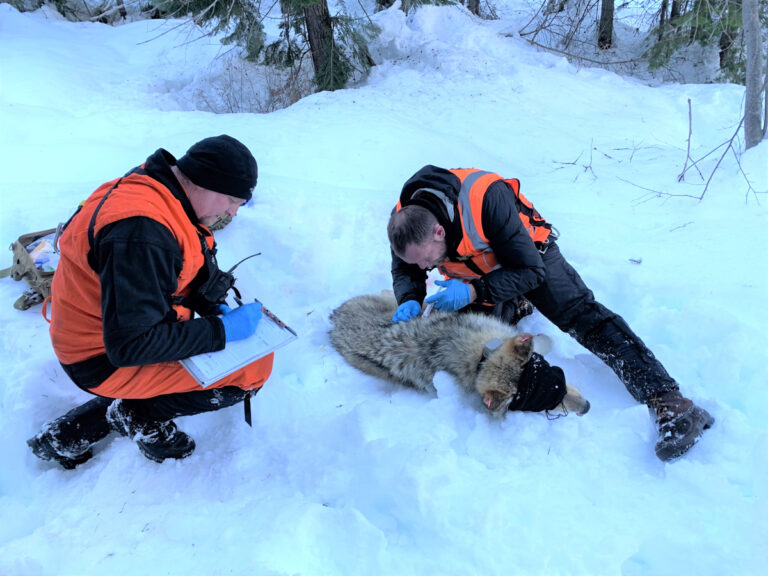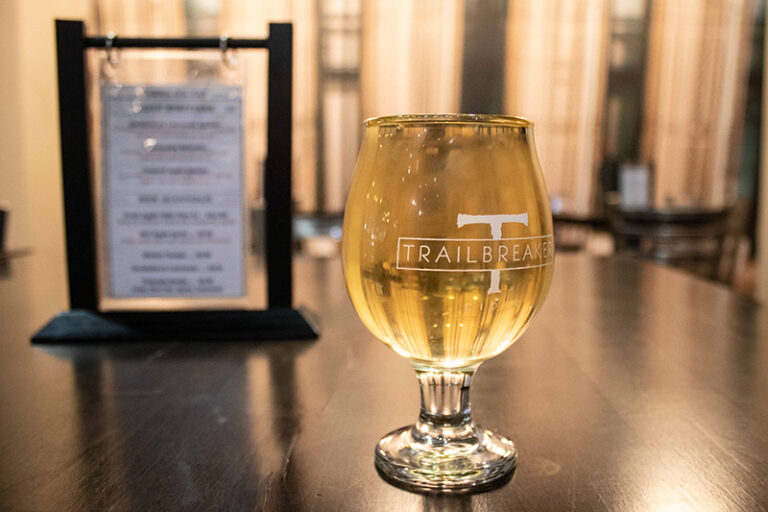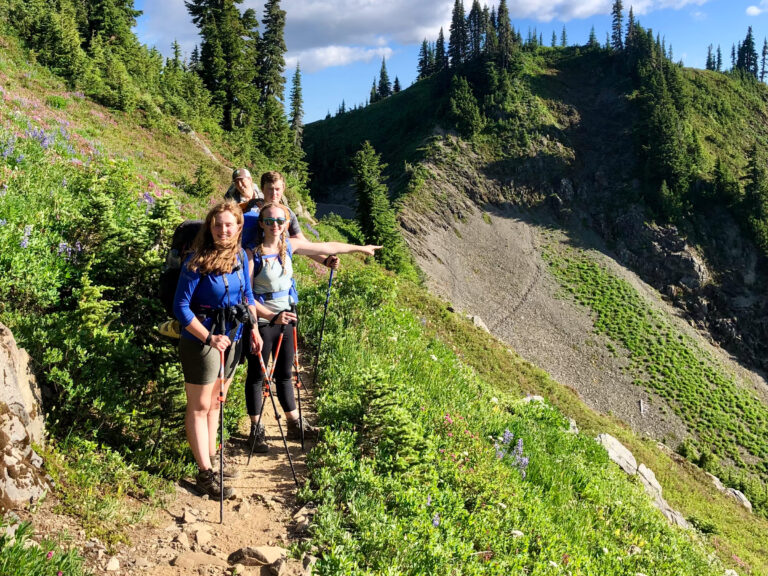By Jon Snyder, Jon Jonckers, & Derrick Knowles
Please take a moment while charging your GPS and IPhone to consider the hallowed tradition of the regional outdoor guidebook. It’s no secret that outdoor knowledge has exploded on the internet. Sites with user submitted data and comments are proliferating and enhancing what we know of the outdoors. But long before we housed such wisdom on electronic devices there was a dedicated and stoic tribe of outdoor scribes who toiled for years in obscurity, for little or no reward, to create guidebooks that spread the love of the outdoor pursuits that gave them sustenance.
In prepping this piece I spoke with climber Randall Green, who created the landmark Idaho Rock book in the eighties. Green’s creative process not only included converting decades of oral history into climbing routes and first ascents, but it also meant documenting and researching scores of summit journals residing in tin cylinders at the tops of mountains. Four chapters into his manuscript Green lost everything with an errant keystroke on an old Macintosh computer and had to retype.
“We tried to educate people about using natural areas as a privilege, not a right,” says Green. “We can’t love these areas to death.” Which is a delicate balance for guidebooks that is often missing from online info.
When looking at old guidebooks we chose only ones that were out-of-print and at least 15-years-old. Without exception, all the outdoor activities depicted in these publications have grown over the years, due in part their pioneering efforts. So what secrets do they reveal? Read on—no batteries required.
Spokane’s Favorite Runs
Author: Jan Pappas and Will Aslin
Year: 1979
Publisher: Self-published
Highest Price: $8.00 on alibris.com
This book was published at the crest of the first big wave of popularity for running, or “jogging,” in the United States. It also corresponds with the golden age of Spokane running in the late 70s, when the city’s reputation as a major running community was cemented. It’s delightful to read the route descriptions that are peppered with historical facts and nods to the influential runners of the day such as Don Kardong, Gerry Lindgren, Len Long, Bill Johns, Terry Kennedy, Ed Rockwell, and Rick Riley. The book is heavy on 15-20-mile “training runs” and even includes a 50-mile gut-buster from Rogers High School to the top of Mt. Spokane and back. Enthusiasm for the sport just spills off the page. And what pages they are. This is one of the most beautiful guidebooks I have ever seen. Hand-lettered and hand-drawn from start to finish by Jan Pappas, Favorite Runs has an exquisite old-world feel—as if Bilbo Baggins had authored a running guide. It’s interesting to see routes like “Hike, Bike and Jog Trail” and “Old Railroad Grade” have evolved into The Centennial Trail and the Ben Burr Trail respectively. The book even includes an anecdote about Carl Ellingsen’s push for the creation of the Centennial Trail. Maybe we are headed in the right direction after all?
Secret History: The back of the book has a section that reads like an obituary for failed local fun runs: The Diet Pepsi 10K, Women’s Spring Thing, The Hog Jog, Wild Goose Chase, Steptoe’s Retreat, Liberty Lake Biathlon, and the Mogulpecker Memorial Mini-Marathon. It’s also the only place I’ve ever seen the term “Wandermere-Land” in print.
J.S.
17 Spokane Bike Trips
Author: Bob and Laurienne Newell
Year: 1973
Publisher: C. W. Hill Printers
Highest Price: $15.00 on abebooks.com
This book is a great catalog of rides that are still mainstays of local cyclists: “Riverside State Park,” “Mount Spokane,” and “Indian Canyon.” It also has some great anachronisms. Did you know they used to call it “Mount Saint Michael’s Scholasticate?” How about the recommendation that “you’ll need at least five gears” to get to the top of Mt. Spokane? The section on avoiding dog hazards might not fly today either; “A well-placed kick is effective, although it’s surprisingly easy to fall off your bike while trying to kick a dog. A squirt bottle with household ammonia is equally effective. As much as you’d like to, try not to seriously injure a dog, this may tend to irritate his owner.”
Perhaps more surprisingly the rest of the introductory road advice has aged quite well. And some of the rides here, like Deep Creek Canyon and Newman Lake, deserve a second look if you’ve never done them. Overall the book is well done for the time and gives you great feeling for the spirit of cycling in the early seventies.
Secret History: Did you know that in fall 1972 a 21-mile loop was set up for an event called “Bicycle Sunday?” For one day “all the streets along the route were closed to automobile traffic.” According the authors this was supposed to be an annual event coordinated by the “Department of Traffic Engineering.” What happened to this great idea?
J.S.
Hiking the Inland Empire
Author: John Dean
Year: 1976
Publisher: Signpost Publications
Highest price found online: $9.49 on abebooks.com
You wouldn’t pick up a thirty-year-old hiking guide expecting to find that the woods and trails described within had weathered the years without change, but Dean’s book is a startling reminder just how much has changed in our backyard, a region once known as the Inland Empire. Many of the places have been transformed for the worse from the quiet nature and primitive historical landscapes Dean describes by rampant road building, heavy-handed development, and dirt bike and ATV abuses.
From the Channeled Scablands, to the foothills around Spokane and the high mountains of Pend Oreille County, Dean gives us a glimpse of familiar and forgotten places from a very different perspective. He writes from a time when there was no cultural contradiction in a home-grown Spokane logger, hunter and Air Force serviceman bemoaning the “pandemonium” of the city, the “trail cycles” that “violate the sanctity of beautiful Paradise Ridge,” or the “logging [that] is insidiously threatening the esthetic beauty and necessity of this Creator-managed wilderness.” This book is a natural treasure in itself.
Secret History: Hiking the Inland Empire serves better as a history text than a practical hiking guide. Did you know there was a mining village off the backside of Mt. Spokane? That part of the Centennial Trail through the Spokane Valley was an old logging rail line? Or that there was once a nearly unbroken pack trail from the outskirts of Newport all the way north to the Canadian border? Neither did I.
D.K.
A Guide To Rock Climbing in the Spokane Area
Author: Bob Loomis
Year: 1983
Distributed by: Mountain Gear
Highest price found online: $24.50 at abebooks.com. Might still be available from Mountain Gear.
I firmly believe pioneers should receive more credit than those who followed close behind. In that vein of thinking, every Inland Northwest rock climbing guidebook owes an enormous debt to Bob Loomis.
Though the information is dated, the Loomis guide stands out among other local climbing guides thanks to the delicate drawings, the attention paid to naming the routes, and the details about Spokane area climbing. Loomis rightly acknowledges Roskelley, Momb, Peterman, Burns and Shannon for their bold climbing and great vision.
The first eight pages draw from interviews and other resources. Pay special attention to the quotes from John Roskelley and his early attempts on what would later become Spokane’s greatest test-pieces. Also note that this guide was published long before Minnehaha morphed into John Shields Park. For that matter, this guide was published before the Gri-Gri and at the very dawn of Gore-Tex clothing.
SECRET History: Add this guide to your bookshelf if only to have a record of the first ascent information. Loomis took great care to note every crack and groove on the local Spokane rocks, and he rightly attributed every first ascent at the back of this guide. This is still the best slice of Spokane climbing history.
J.J.
Hiking the Trails in the Bitterroot Mountains
Author: Morton L. Arkava
Year: 1983
Publisher: Pruett Publishing Company
Highest price found online: $10 on abebooks.com
Previous generations from tougher, more challenging times judged the quality of things by their ability to persevere over the years. Measured by that standard, the Bitterroot Mountains south of Lolo Pass and Highway 12 have held up pretty damn well. By no accident, most of the trails described by Arkava have changed little since he wrote about them a quarter of a century ago. There are no ski resorts or gondolas, ORV thrill parks, or pay-to-play backcountry lodges along the wild spine of the Bitterroot divide today—only the quiet serenity and primitive challenge of wilderness pack trails and untrammeled nature. Most of these trails were protected as part of the vast and largely ecologically intact Selway-Bitterroot Wilderness Area twenty years before the book was published, ensuring their longevity. Nevertheless, there has been a tendency for forest service trails to fall off the map as maintenance funds decline. In Arkava’s book, with its hand-drawn map work, you might find a few such disappearing, unmaintained trails, in addition to the classic hikes that fill the pages of more current guides, at a bargain out-of-print price.
Secret History: Retro equipment recommendations include external frame packs, eight pound dome tents made of “space age” materials, a grill for campfire cooking, and warnings against hiking in blue jeans and burning yourself from hot liquids with old school Sierra Club metal mugs. Ahhh, the good old days.
D.K.
The Washington Desert: A Climber’s Guide
Author: John Eminger & John Kittel
Year: 1991
Publisher: Serac International Press
Highest price found online: $28.99 at abebooks.com.
John Eminger, far and away, wins the award for the funniest unintentional line in all of the guidebooks featured here. The introductory sentence reads, “The Desert will, in all likelihood, not change to any great extent due to the writing of a guide.” Barely 15 years later, more than 5 guidebooks have focused on or featured the climbing at Frenchman Coulee. Consequently, every seasoned climber in Washington has made at leastone pilgrimage to the basalt column mecca.
Many years later, Eminger swapped his climbing shoes for ski boots, purchased 49° North Ski Resort, and founded the Inland Northwest Ski Association. At least two Internet sites quote him saying, “The long and short of it is you never do just one thing.”
Jim Yoder, a noted Frenchman Coulee climber and guidebook author, wrote the following: “This well received guidebook [The Washington Desert] with incredible hand-drawn, detailed topos opened the climbing area to the masses and there was no looking back. “
SECRET History: While other Frenchman Coulee guidebooks feature new climbs, new trails, current access requirements and additional route information, none of them include the appendix of Columbia Basin ice climbs. “Very special thanks go to Glen Frese and Mark Shipman for their extensive notes on the ice climbing in the Columbia Basin. It was their years of exploration and documentation that made it possible to add such a complete ice climbing appendix.”
J.J.
Idaho Rock
Author: Randall Green
Year: 1987
Published by: The Mountaineers
Highest price found online: $77.75 at abebooks.com
Today, the cover photo featuring Randall Green in tight, bright spandex pants usually sends climbers running. However, at the time of his publication, Green stood near the top of bold climbing and ingenious route development – not only in Idaho but also across the Northwest. Green and Joe Benson would later go on to write the primary climbing guidebook for the Bugaboos in the Canadian Rockies, as well as Montana’s rock climbing guide.
In most cases, the popular section on Chimney Rock shows the most wear and tear. By now, thousands of people have trekked to the granite icon with this book in hand in order to climb it. But it doesn’t appear as if many people have taken the book to the seldom-climbed southeastern shores of Pend Oreille and worked the routes at Granite Point. If you’re willing to start climbing right out of a boat, there’s some fantastic climbing there.
Twenty years later, Randall Green appears in Thad Laird’s Idaho climbing guide, and this is what he says: “We went to Yosemite, the North Cascades, the Bugaboos, Squamish, Leavenworth, Devil’s Tower and the desert Southwest. But we kept coming back to these scruffy crags and ridge top spires to live on the edge among a little slice of paradise.”
SECRET history: Schweitzer Rocks (a little known crag located off Granite Ridge Road) will soon be a memory due to recent Sandpoint growth. Sadly, other ‘practice’ rocks and cliffs too close to railroad tracks are off limits also.
J.J.
Idaho: A Guide in Word and Picture
Author: W.P.A. Federal Writer’s Project
Year: 2nd edition 1961
Publisher: Oxford University Press
Highest price found online: $75.00 on alibris.com
This book has everything you could hope to find in an old guidebook: great writing, historic photos, lots of secret history, and many names and locations that are now all but lost to us today. The book is a direct result of the Works Progress Administration Federal Writers Project of the great depression, which makes it all the more interesting today as the country is again in the midst of economic turmoil. Will President Obama with his well-documented support for the arts launch a similar initiative? Can you imagine the likes of Jess Walter and Sherman Alexie writing a guidebook to the Inland Northwest? That’s basically what the Idaho: A Guide in Word and Picture is. The writing is stunning. Dig this description of Moyie River falls; “It comes down then black leisurely to the power dam and pours over it like pale green ice. But for a few feet only: after bursting white violence and losing its direction, the water rolls downward again, green in its body but covered over in backwashing ridges that look as crisp as celery.”
The book is divided up into sections about flora, fauna, history and 11 tours through the state. Even though the second edition text has been updated from the original 1937 you get a strong sense of early 20th century Idaho, a land still on the verge of being completely wild and filled with mystery. Can you imagine images of Lake Coeur d’Alene without a single manmade structure in sight? Or Kamloops trout that were the “largest in the world?” Unfortunately the fascinating Native American history here is also coupled with language that is clearly patronizing and condescending even though it was surely not considered such at the time. For anyone interested in reading primary material on what the state used to be like it’s hard to recommend this book highly enough. A WPA guide was made for each state in 1937, including one for Washington called Washington: A Guide To The Evergreen State.
Secret History: Every page seems to bring up tidbits worthy of further investigation. Was “Coeur d’Alene” originally “a derisive term applied to greedy traders from Canada?” Did the Indians use the islands in Lake Pend Oreille as cemeteries where they hung the dead in trees? Did an 80-year-old blind Indian named Klait-too locate the remains of David Thompson’s first trading house in 1923? There are fun anachronisms too: “[Chimney] rock itself cannot be scaled without elaborate mechanical apparatus.”
J.S.
Idaho: Flies of the Northwest
Author: Inland Empire Fly Fishing Club/ Fenton Roskelley
Year: 1986
Publisher: Frank Amato Publications
Highest price found online: $25.00 at abebooks.com
Notable for many reasons, including being the first color guide put out by the Inland Empire Fly Fishing and being edited by Out There Monthly contributor Fenton Roskelley, this guide offers an interesting perspective on the evolution of flies in our area. Fly patterns have “changed radically” since the release of this volume according to Fenton Roskelley. “Different types of patterns are in use today, particularly midges,” says Roskelley. Is that because the fish have changed? “Fish don’t change,” says Roskelley. People just get better at catching them. He also reports that the Inland Empire Fly Fishing Club is still thriving, with almost every member still tying flies and many young devotees becoming involved. The most recent update of Flies of the Northwest was in 1998. It might be time for a new one.
Secret History: Some of the fly titles of the past make great reading; Elk Hair Humpy, Big Horn Scud, Gold Ribbed Hare’s Ear, Spokane Spook, Skagit Coachman, and Dave’s Two-Egg Sperm Fly. But none can beat the Bitch Creek Nymph.
J.S.
Walk About Spokane
Author: Barbara Snyder
Year: 1993
Publisher: Asundry Publishing
Highest price found online: n/a
There’s been some talk about forming a pedestrian advocacy group for Spokane that would function in a similar manner as the Bicycle Advisory Board. It’s a great idea. Advocates looking for evidence of the town’s long, proud walking tradition can look to Walk About Spokane as exhibit ‘A.’ The concise pamphlet written by—full disclosure—my mom, features 8 urban walks—all 3 miles or less. Walking locales such as Browne’s Edition, Corbin Park, Peaceful Valley and Garland may seem obvious now, but appreciation of these pedestrian friendly neighborhoods has been a long time in coming. If you can find one, this publication is a great introduction to the best spots to stroll in town. It would be great to see new version updated and expanded with more walks.
Secret History: There’s a reference to the Cheney Cowles Museum, which is the earlier incarnation of the Northwest Museum of Arts and Culture. The Hillyard walk mentions the 5404 N. Market location that was used as the set for “Benny’s Car Clinic” in the film Benny and Joon.
J.S.













